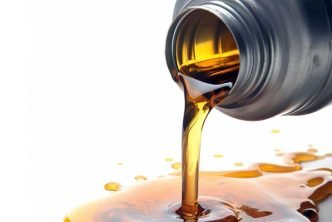If you are planning on buying a large quantity of hay for your livestock, then it is important to make sure that the hay you get is of high quality. The best alfalfa hay has a high leaf-to-stem ratio, large intact leaves, low detachment at touch, and good homogeneity. These factors will ensure that your animals are provided with the highest levels of nutrition.
Table of Contents
Leaf shatter
If you’re trying to produce high-quality alfalfa hay, it’s important to know how to prevent leaf shatter. In fact, leaf shatter can be a major factor in reducing the nutritional value of the hay.
Leaves are the most nutrient-rich part of hay. The crude protein content of leaves is typically two-thirds of that of stems. However, leaves can break and shatter during the baling process. This loss of nutrients can lead to low-quality hay.
The amount of leaf shatter in good quality alfalfa hay depends on several factors. These include moisture content, raking, and sun exposure.
The ideal time to rake is when the moisture content is between 35 and 40 percent. Raking a large swath helps the hay dry uniformly. A wide swath also allows for more sun exposure.
When alfalfa hay is raked too wet, it can lose up to 15 percent of its dry matter. It’s also possible to twist plant materials, which can lower the nutritive value of the hay.
Leaves are the most vulnerable portion of the hay. Hay that is raked too dry will have more leaf shatter. Leaf shattering can be reduced with raking in the early morning or late evening.
In addition, the moisture content of hay can be controlled by using mechanical conditioning. Using this technique, hay is rolled or shredded, which makes more of the plant surface accessible to air. Mechanical conditioning can increase drying rates by up to 80 percent.
The leaf-to-stem ratio, or the proportion of leaves to stems, is also a measure of hay quality. A high leaf-to-stem ratio indicates that the hay has small, fine stems.
High leaf-to-stem ratio
The leaf-to-stem ratio is one of the best indicators of quality hay. It is important to have a high leaf-to-stem ratio because it indicates that there is a high amount of nutritious leaves. There are different parameters that can be used to assess the leaf-to-stem ratio, including maturity, color, texture, and the number of leaves.
Hay with a high leaf-to-stem ratio is characterized by a fine texture, a high percentage of green leaves, and a low proportion of seed stems. Quality hay should have large intact leaves and small, fine stems.
The number of leaves to stems in hay also varies with age and harvest cycles. A mature forage plant has a decreasing leaf-to-stem ratio. This decrease is caused by the plant’s growing process.
As alfalfa plants mature, the concentration of leaves drop, and the number of stems increases. In contrast, the amount of nonstructural carbohydrates increases. These carbohydrates include starches, highly digestible starches, and sugars.
The number of leaflets in a hay sample is determined by randomly selecting three leaflets from the upper part of the branch. Leaf width is determined by measuring the width of the leaf between three leaflets.
Alfalfa leaves are higher in nutritional value than stems. However, the concentration of stems in the hay can vary, depending on factors such as rain damage, handling, and maturity.
Hay that is harvested in its ideal maturity stage contains a high leaf-to-stem ratio. It is soft to the touch and high-quality. Also, a high leaf-to-stem ratio indicates that the hay is baled at a desired maturity.
Late-maturity hays are harder to the touch. They may have a brownish color, or the leaves are thin. If the hay is stored away from direct sunlight, the leaves will remain green.
Large intact leaves
If you want to harvest high-quality alfalfa hay, you should know how to assess its quality. For this, you need to look for large intact leaves. It should also have a low percentage of seedheads. You can easily check for these factors with the help of a hay sample.
The leaf-to-stem ratio of hay is one of the most important factors affecting its quality. When the leaves are more than the stems, the hay has a better feeding value. However, when the leaves are less than the stems, the hay has poorer quality.
In addition, the leaves contain more protein than the stems. This makes the hay more digestible. But the concentration of the leaves can decrease as the crop matures.
In recent years, breeding efforts have been focused on improving the leaf-to-stem ratio. They have also increased the leaflet size. These improvements have been coupled with increased resistance to leaf diseases.
There are also new alfalfa varieties that improve the whole plant fiber digestibility. However, the stems are still more indigestible than the leaves. So, the leaves contribute up to 70 percent of the RFQ.
As a result, the stems may be more prone to mold. Therefore, it is important to avoid baling the hay at too dry a moisture content. A moisture content of eight to fifteen percent is too dry for hay.
The best time for the hay to be harvested is during the ideal maturity stage. This is when the hay has a high leaf-stem ratio, a low number of seedheads, and fine stems. Ideally, the hay is green.
In addition, the hay should not be stacked or packaged. This is because dry leaves can easily detach during transportation and can lead to poor hay quality.
Low leaf detachment at touch
Alfalfa is a tall, leafy grass with a deep root system. The stems grow to be three feet in height. It has small purple flowers and clusters of green leaves. When dried, it turns dark green.
Good quality alfalfa hay is characterized by a high percentage of leafiness, a high stem-to-leaf ratio, and a good aroma. It also contains good amounts of crude protein and TDN.
Alfalfa grows to three feet in height and has small purple flowers. The plant is weed free and contains a pleasant fragrance. There is a deep root system, and the leaves are clustered together. They can be cut at any time, but the best results come from cutting early in the season.
The first stage of growth, pre-bloom, produces a large quantity of un-digestible protein. The protein content decreases as the plant matures. Post-bloom Alfalfa has the highest digestible protein.
Alfalfa hay is a good source of Potassium, but excess Potassium can set back growth. High levels of Potassium, especially in the soil, will push phosphate and calcium availability out of the plant.
There are several curing methods that can be used to enhance the nutritional value of alfalfa. One method involves soaking the hay in a solution of BlueGold(r) irrigation solution. This technique has been proven to increase yield by 50%. Another method is to have the hay cured indoors for 127 hours.
The Bureau of Public Roads and the United States Department of Agriculture cooperated to study the effect of artificial drying on the quality of alfalfa hay. A large number of curing practices were compared.
These experiments are helpful in identifying the influence of curing on the nutritive value of alfalfa. The evaporating environment has been given special attention.
Homogeneity
Alfalfa, a perennial forage legume, is a crop that is grown in many parts of the world. It is a high-yielding plant, with a protein content that makes it a preferred forage crop. The yield of alfalfa is influenced by watering regimes.
Alfalfa is commonly used in mixed mixtures with other forage crops, including grasses. These mixtures improve forage seasonal distribution and increase forage yields. However, the optimum amount of irrigation for an alfalfa-grass mixture is unknown.
A study was conducted to evaluate the response of an alfalfa-grass mixture to irrigation. Water use efficiency of alfalfa was estimated based on the ratio of forage yield to the amount of water applied. Optimum irrigation amounts were calculated for sustainable forage production systems in an arid climate.
Alfalfa was planted in the fall of 2012 and was harvested in four separate harvests between 2013 and 2014. The average forage yield was 24.5 Mg/ha at an applied irrigation rate of 1031 mm. During the first growing period, fertilizer (28 kg N ha-1, 133 kg P2O5 ha-1, and 28 kg K2O ha-1) was broadcast over the field. Harrowing was used to incorporate the seed and soil.
The alfalfa was treated with a fungicide during the first growing period and during the second. The fungicide, Priaxor(r), contains 14.3% fluxapyroxad. Fungicide application reduced the incidence of defoliation. This fungicide was applied using a backpack sprayer.
The effect of regrowth cycles on alfalfa water use efficiency was also investigated. Alfalfa yields increased with increasing irrigation amounts from 2.9 to 25.8 Mg/ha for treated alfalfa in 2013 and ranged from 11.5 to 25.6 Mg/ha for untreated alfalfa in 2014. Maximum forage water use efficiency was achieved with 190.5 mm of applied water for the third regrowth cycle in 2013.
A variety of irrigation regimes was tested on alfalfa after the spring of 2013. Seven different regrowth cycles were applied to alfalfa, which included uniform application during the first regrowth cycle, followed by variable applied irrigation amounts during the second and third regrowth cycles.





